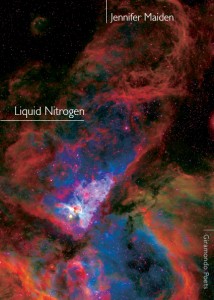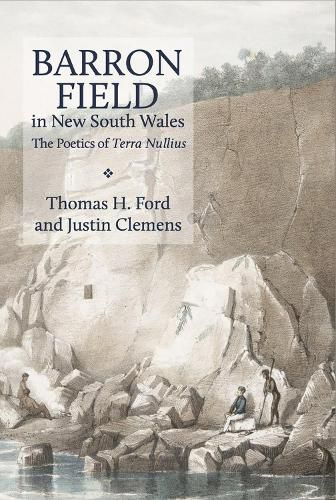Julia
delayed her victory speech at Question Time, as
all honoured the latest dead in Afghanistan.‘The Year of the Ox’
My heart has an Embassy
for Ecuador as rare in air
and sumptuous as the Andes,
as clear as the Equator.‘My heart has an Embassy’
Like all Jennifer Maiden’s book titles, Liquid Nitrogen is both local and specific in meaning. It is used in medicine, in cryopreservation of living matter and to freeze off skin keratoses and moles; it can preserve or eliminate. It is also used to prevent supercomputers from overheating – the same computers that are working to decode WikiLeaks encryptions:
George Jeffreys woke up in Langley, Virginia,
next to a vat of liquid nitrogen, where
bubbled a giant computer: Assange
was recorded on a monitor…
… The M.I.
sniffed the U.S. beer, which left
mist on the air like the vat, where Julian
decoded again in slow, nitrous bubbles.‘George Jeffreys 11: George Jeffreys Woke Up In Langley’
From her superbly accomplished first books Tactics (1974) and The Problem of Evil (1975), to this, her sixteenth book of poetry, Maiden’s style has evolved from bitingly tense portraits and narratives with echoing dialogues and soliloquies, constructed in heightened, almost visionary imagery, to a more direct quasi-conversational tone. This later poetry is more expansive, less tightly bound and clipped. It is euphoniously structured by repetition and assonance with rhyme occasionally employed to close a poem.
Liquid Nitrogen’s first poem, ‘The Year of the Ox’, contrasts Maiden’s ox with her daughter’s tiger.
I am
an old ox of the moon. From mist-grits, my furrow
forms at night and ploughs easiest
in candid unmythical moonlight…… As an ox, I am
Lying on Straw and watching Straw Lying …
As an ox,
I am a machine of memories
To plough one’s furrow, from Virgil’s Eclogues, is also to write verse. As in previous volumes, points of difference or conflict quilt the narratives, as characters wake from dreams or return from the dead: ‘We also, / Eleanor reflected, continue to grow / after death’ (‘Hillary and Eleanor 9: The Pearl Roundabout’); ‘Hillary sat compact / as a tiger behind her, in misery for attention’ (‘The Year of the Ox’).
Here the book’s themes unfold like an overture, introducing a cast of characters often poised between or surveying two opposing theories. In a sense, this is a metaphor for art’s multi-dimensional, polyvalent, inherently ambiguous quality. All sides require and desire attention. Everything, indiscriminately, is distracting material to the artist; everything exists, as Mallarmé observed, to be put into a book – ‘le tout au monde existe pour aboutir à un livre.’ From the confused loyalties of a re-educated captured soldier (The Problem of Evil), to CNN reporters in the Gulf War (Mines, 1999), to the properties of gemstones and jewels and a modern version of the medieval Labour of the Months (Birthstones, 1978), to secular ‘Psalms’ (The Winter Baby, 1990), to ruminations on handedness (For The Left Hand, 1981) – Maiden’s motif of juggling varied ways of seeing, of antagonistic philosophies sometimes inscribed metonymically, has gradually become more essayistic.
Throughout her oeuvre, Maiden uses the traditional pairings of day and night, sun and moon, ice and fire, but she also uses distinctly feminised imagery: ‘vaginal red’ (Mines); ‘It is a white nightdress & her body / flickers clitoric as candleflame in it.’ (‘nightdress’, The Trust, 1988). That is, her poetry recasts the feminine as feminist, as confident but also confiding intellect. Just as John Kinsella fuses conversations with his partner or child into his poems, so too Maiden’s poems contain many references to her daughter, another pairing – of parent and child – that erodes any misleading separation between the quotidian, the transient, and art.
Embedded in Liquid Nitrogen’s vibrantly alert, interlinking poems of subtle persuasive protest are the political figures of Eleanor Roosevelt, Hillary Clinton, Julia Gillard and Kevin Rudd. These poems of agglomerating thought develop around their protagonists, who interrupt, argue, joke, flirt, across a canvas of bright reiterating images: birds resting on a ‘liquid clothesline’ (‘Diary Poem: Uses of the Civil War’); ‘move on / in the milk-warm moon of caution’ (‘In the International Pavilion’). Earlier books, Bastille Day (1990) and Acoustic Shadow (1993) – whose title refers to an inability to hear a battle when near it, due to topography, winds, or other obstructions – also contain glimpses of political figures, such as Dubcek (‘Wenceslaus Square’), or ‘Mandela in New York’: ‘Their outlines seem clearer than others, / their shadows seem tight with purpose, / as if the first loss is not time or health, / so much as forever of the freedom / to escape to the purposeless self.’
Maiden’s habit of finishing and commencing adjacent poems with the same line has long been part of her repertoire. These ‘cluster’ poems, as she has called them, beginning most conspicuously in Mines, focus on the media partly through the prism of Guy Debord’s theory of modern life as inauthentic spectacle. Where Eliot Weinberger’s layered essay What I heard about Iraq (2005) builds into a scathing indictment of U.S. policy merely by stating the facts and quoting the war’s chief protagonists, Maiden pours facts into narrative:
George Jeffreys
used his free right polishing hand on the remote,
saw that Chemical Ali had been hanged
in Iraq for gassing Kurds and that Sky
by coincidence was featuring birth
defects caused by chemicals the U.S. used
in Fallujah …‘The Year of the Ox’
The characters of Clare and her ex-Probation Officer George Jeffreys, first found in Maiden’s novel Play With Knives (1990), have made many appearances in these ‘cluster’ poems over the past decades, almost as a contemporary Dante and Virgil. In ‘George Jeffreys Woke Up in Beijing’, George and Clare – guides to an underworld of 24/7 televised crises – wander through the Forbidden City conversing with a dissident. Confucius is quoted and thus appears. As in the poem ‘Carina’, imagination and art not only converge with the real or with media spectacle, but recover and remake it. Awakening to a new or parallel world, as if waking into dream, is an insistent refrain:
Clare Collins woke up in Mt. Druitt,
hopeful with the amnesia of waking, drymouthed
from a nap on her mother’s sofa.
For the first two minutes, one has never
killed.‘The Year of the Ox’
Maiden is also now commenting more overtly than she once did, sometimes didactically, proferring many informed and gratifyingly contentious ideas: ‘Perhaps / he was dissuaded by that Sixties need / to associate hope with sex’ (‘Carina’). Another undulating idea, or meme, is that poetry is digital technology because it is ‘disparate concepts combined in binary structures … iamb / trochee, alternating syllables’ (‘The Year of the Ox’) and prose, because it is continuous and flowing, is analogue.
I wonder
once more if the U.S. Civil War didn’t serve
the budding Military-Industrial Complex
by proving that external wars are nicer
than anything internecine, suggesting
that one would prevent the other …
I search for Civil War lieder …
… their studied voices
satisfactorily plaintive, powerful, no
hesitation at the word ‘black’ or
at milking prolonged trills as Foster
would have wanted: with, also, a sure,
keen, clean, classic grain of fear,
like a country
buying its eternity with blood.‘Diary Poem: Uses of the Civil War’
How character adapts to trauma, or is forged in it, is another tangential theme. One of the most complex, even hermetic, of Maiden’s earlier poems, ‘The Trust’, has the narrator and several figures intertwine in what seems a tormented, rather murderous elegy, a blank verse pietà cradling a past: ‘At the easy end / we start and trust / the crying corpse nightlong / with litany and lullaby.’ The dead are ever-present, contained in art, to inspire, console, castigate – Maiden reincarnates writers Grace Perry, Thea Astley and Dorothy Porter – and the elegiac pulses through several volumes. Maiden’s own characters also interject and collide episodically. In ‘Hillary and Eleanor 9: The Pearl Roundabout’, Clinton’s pearls lead into memories of the recently destroyed Pearl Roundabout monument in Bahrain, then on to the Middle English poem Pearl – itself a highly significant poem in which the poet meets his lamented departed daughter in a vision, she instructs him in religious ethics, and he wakes at the end, supposedly fortified by this knowledge of a glimpsed paradise.
Maiden is mild on Rudd, and more censorious of Gillard’s avowed respect for Welsh hero, Labour Party reformer Aneurin (Nye) Bevan, who was responsible for the implementation of Britain’s National Health Service. But both contemporary politicians are shown engaging with more galvanising forebears. It is the media-represented two-dimensional persona, however, that Maiden parades in critical detail, analysing its language of surfaces. Humour also often glides through some scenarios, such as Eleanor speaking to Hillary:
And I did
find Campobello daunting. Sea views
are always so demanding and, you know,
the better the view, the worse the relationship…
Running for office makes you feel younger. I know,
it took years off Franklin…‘The Year of the Ox’
Poetry, then, is the liquid nitrogen that preserves and allows these meditations and discourses to amass through space and time. Yet Maiden’s poems perhaps also intend to freeze off – that is, to work as the medical liquid nitrogen.
The Gillard death of Labor
is the dying of a country, not just
Palestine or Afghanistan but ours…
Perfect anarchy is perfect
obedience, Julia listens
to wild factions, dry fractions, with
which the clerisy counsels, listens
with the docility which seems to her
perfection of power, like Weil’s
aphorism that moments of attention
and insights of genius do not differ
in kind.‘Diary Poem: Uses of Powerlessness’
A continuing theme in Maiden’s work is violence, specifically murders and war-time killings, but also, implicitly, war as metaphor. Violence is seen to be innate but crystallising: ‘The / Oblivious hero wanders / Like a legend / About the glowing pastel rug / Exploring a terse theory of McLuhan’s: / That violence is the effort to create / A personal identity’ (‘Hypothesis’, Tactics). The idea is reiterated here in an interaction between Dietrich Bonhoeffer and Kevin Rudd, in a poem that shares its title with an African-American spiritual: ‘but the jokes / Rudd made were flirtily Teutonic, his slang / as strangely stylised as an Eden from a culture / he knew had never been, as if to say, / “Okay: / So we’re all self-constructed out of trauma. / Standing here, / I defy you to file me away”’ (‘Deep River’).
The many references to the act of writing make the conscience of art into another significant theme. Maiden is interested in the question of how to depict a world, and whether or not art, as opposed to mass media, can convey truth, or can be ‘a resistance force, an unofficial opposition’, as novelist Pramoedya Ananta Toer put it. She investigates and displays how worlds, fields of meaning, are created. Fittingly, this book’s cover bears a photo of the Carina nebula, a starry cluster of forming masses, mirroring poetic process. In ‘Carina’, the poet, Prospero-like, conjures Carina in mauve sixties jumpsuit on her verandah.
In contrast to these explicatory poems, Maiden has also celebrated poetry’s musical resonance in some of her rather Tennysonian short poems, such as ‘Mnemonic’ (Mortal Details, 1977) and ‘Enth’ (The Border Loss, 1979), which are banked with play and mystery. These poems twirl in an almost Old English alliterativeness and rhythm, intoxicated with joy in language, and slide away from the weight of meaning. This style is used again in Liquid Nitrogen, often in a poem’s final lines, which seep into lyrical description, almost as if it has sloughed off argument, or any doubts about art’s efficacy or veracity.
Warragamba
Dam water floods weeds to Hawkesbury
so the emerald-cut shines smooth and fine
and chill as liquid nitrogen again, here
from the dead dam depths and under
it the goddess turquoise, like
semi-precious sky,
like any shattered sun to shine
like water-diamonds, like
all revenants is private but returns
a public habit lying it is mine.‘Emerald-cut’
As she did in her recent books Mines, Friendly Fire (2005) and Pirate Rain (2010), Maiden has again engraved present controversies in formidably distinctive poetry, while revivifying a few of the surprisingly amicable dead. Liquid Nitrogen scans a media-embossed politics, unrolling theories amid dailiness, and preserves a mind ceaselessly in action, armed and complete with its ‘machine of memories’.







